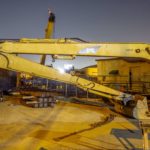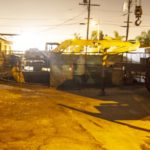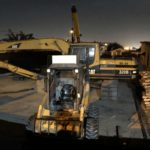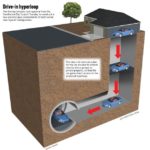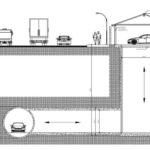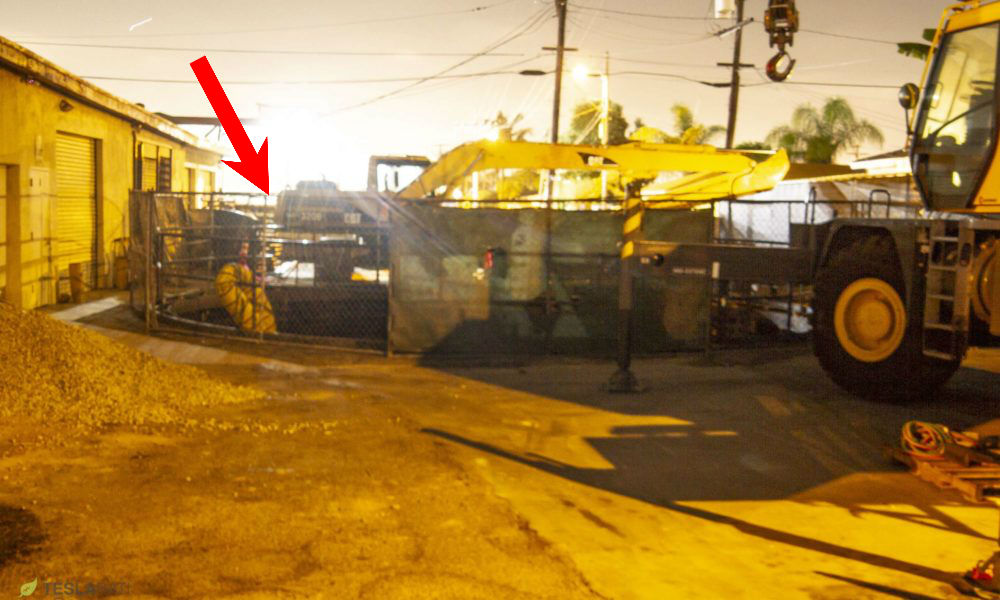
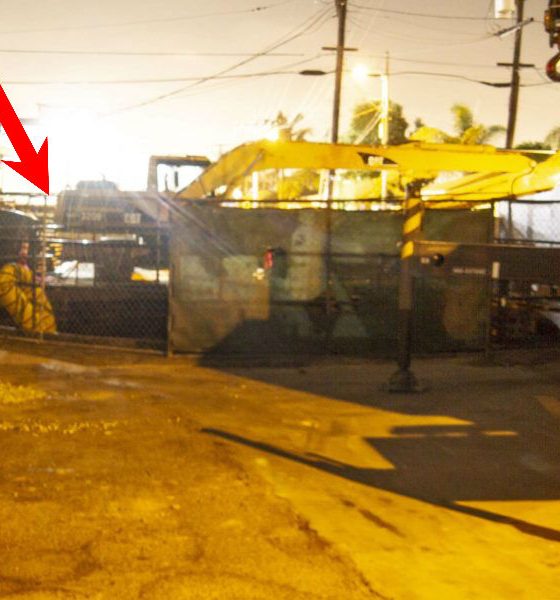
News
Elon Musk’s Boring Company breaks ground for garage-elevator construction
Last month, Elon Musk’s tunneling startup, The Boring Company, was granted an approval by the city council of Hawthorne, CA to build a prototype garage-elevator concept that would be linked to one of the company’s high-speed tunnels. Recent photos from Teslarati photographers Tom Cross and Pauline Acalin reveal that construction of the prototype elevator concept has already begun.
The Boring Company’s prototype garage-elevator is being built west of SpaceX’s Hawthorne facility. The location of the futuristic garage is no accident, as the startup plans to have cars enter the tunnel from the SpaceX campus, move through the tunnel and on to the garage-elevator, and then travel back to SpaceX as part of the concept’s tests. Adopting such a process allows The Boring Co. to avoid creating additional traffic on the street.
Photos captured by Teslarati photographers reveal that The Boring Company has broken ground on the site of its recently-announced garage-elevator. While the startup has not officially announced that the construction corresponds to the planned elevator concept, the site’s location on 120th St. near Prairie Avenue matches the address of the project that the company confirmed to The Mercury Times last month. Furthermore, the pit’s sheer scale fits well with the company’s plans to dig a hole to extract segments of its tunnel boring machine (TBM).
- The excavation site of the Boring Company’s garage-elevator prototype. [Credit: Tom Cross/Teslarati]
- The excavation site of the Boring Company’s garage-elevator prototype. [Credit: Tom Cross/Teslarati]
- The excavation site of the Boring Company’s garage-elevator prototype. [Credit: Pauline Acalin/Teslarati]
The site of the Boring Company’s excavation for its garage-elevator prototype. [Credit: Tom Cross and Pauline Acalin/Teslarati]
Looking at the images of the construction in progress, it appears that the hole being excavated is around 30 feet or more in diameter. This is quite substantial, considering that graphics provided by the tunneling startup show the garage-elevator transporting cars one at a time. As noted by AutomobileElevator, a company in the business of providing car elevators, lifts that are designed for large vehicles like full-sized SUVs usually have dimensions of 9.3 x 20 x 7 feet – significantly smaller than the pit in the Boring Company’s ongoing excavation. With this in mind, it appears that the tunneling startup’s garage-elevator, once complete, would have enough space to accommodate large mainstream vehicles like full-sized SUVs and trucks.
- The Boring Company’s proposed prototype garage. [Credit: The Boring Company]
- The Boring Company’s proposed prototype garage. [Credit: The Boring Company]
The Boring Company’s proposed prototype garage-elevator concept. [Credit: The Boring Company]
In a comment about the garage-elevator, Boring Company representative Jane Labanowski noted that the prototype concept would be an essential part of the tunneling startup’s vision for the future. The garage-elevator, if any, would serve as convenient entry point for the company’s high-speed tunnel system, particularly for those in residential areas.
“It’s an important part of the longer-term vision the company is trying to build,” she said.
The Boring Company might be a newcomer in the transportation industry that is more well-known for its quirky merchandise such as the Boring Company Not-a-Flamethrower, but the tunneling startup is already starting to gain contracts for high-profile projects. Earlier this year, for example, the Boring Company won a contract for the construction of the downtown Chicago-O’Hare high-speed transport line, beating larger, more experienced conglomerates which were also bidding on the project. The Chicago project would feature the Loop system, which features Tesla-made fully-electric pods capable of transporting up to 16 people at a time at speed of up to 150 mph.

News
Tesla Europe rolls out FSD ride-alongs in the Netherlands’ holiday campaign
The festive event series comes amid Tesla’s ongoing push for regulatory approval of FSD across Europe.
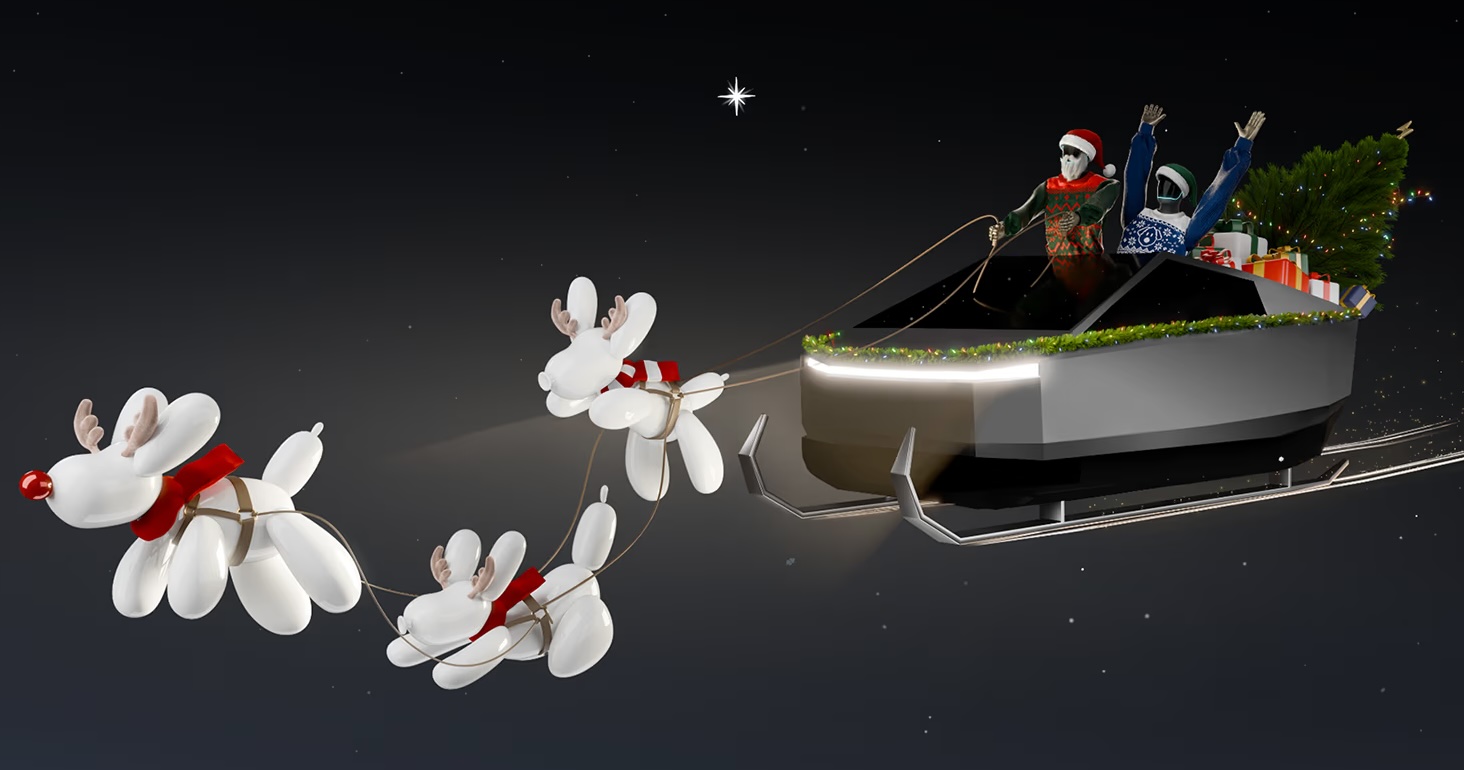
Tesla Europe has announced that its “Future Holidays” campaign will feature Full Self-Driving (Supervised) ride-along experiences in the Netherlands.
The festive event series comes amid Tesla’s ongoing push for regulatory approval of FSD across Europe.
The Holiday program was announced by Tesla Europe & Middle East in a post on X. “Come get in the spirit with us. Featuring Caraoke, FSD Supervised ride-along experiences, holiday light shows with our S3XY lineup & more,” the company wrote in its post on X.
Per the program’s official website, fun activities will include Caraoke sessions and light shows with the S3XY vehicle lineup. It appears that Optimus will also be making an appearance at the events. Tesla even noted that the humanoid robot will be in “full party spirit,” so things might indeed be quite fun.
“This season, we’re introducing you to the fun of the future. Register for our holiday events to meet our robots, see if you can spot the Bot to win prizes, and check out our selection of exclusive merchandise and limited-edition gifts. Discover Tesla activities near you and discover what makes the future so festive,” Tesla wrote on its official website.
This announcement aligns with Tesla’s accelerating FSD efforts in Europe, where supervised ride-alongs could help demonstrate the tech to regulators and customers. The Netherlands, with its urban traffic and progressive EV policies, could serve as an ideal and valuable testing ground for FSD.
Tesla is currently hard at work pushing for the rollout of FSD to several European countries. Tesla has received approval to operate 19 FSD test vehicles on Spain’s roads, though this number could increase as the program develops. As per the Dirección General de Tráfico (DGT), Tesla would be able to operate its FSD fleet on any national route across Spain. Recent job openings also hint at Tesla starting FSD tests in Austria. Apart from this, the company is also holding FSD demonstrations in Germany, France, and Italy.
News
Tesla sees sharp November rebound in China as Model Y demand surges
New data from the China Passenger Car Association (CPCA) shows a 9.95% year-on-year increase and a 40.98% jump month-over-month.
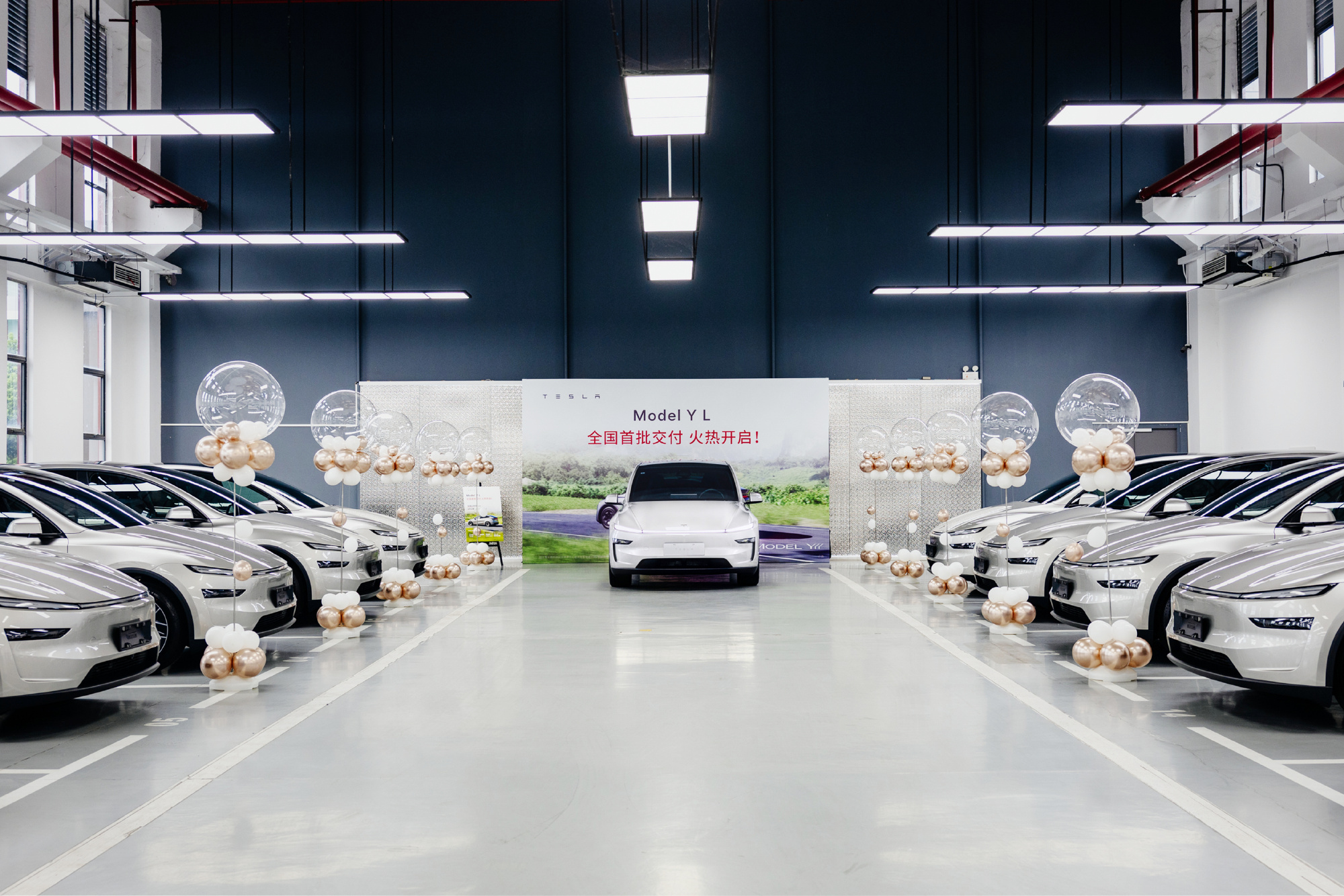
Tesla’s sales momentum in China strengthened in November, with wholesale volumes rising to 86,700 units, reversing a slowdown seen in October.
New data from the China Passenger Car Association (CPCA) shows a 9.95% year-on-year increase and a 40.98% jump month-over-month. This was partly driven by tightened delivery windows, targeted marketing, and buyers moving to secure vehicles before changes to national purchase tax incentives take effect.
Tesla’s November rebound coincided with a noticeable spike in Model Y interest across China. Delivery wait times extended multiple times over the month, jumping from an initial 2–5 weeks to estimated handovers in January and February 2026 for most five-seat variants. Only the six-seat Model Y L kept its 4–8 week estimated delivery timeframe.
The company amplified these delivery updates across its Chinese social media channels, urging buyers to lock in orders early to secure 2025 delivery slots and preserve eligibility for current purchase tax incentives, as noted in a CNEV Post report. Tesla also highlighted that new inventory-built Model Y units were available for customers seeking guaranteed handovers before December 31.
This combination of urgency marketing and genuine supply-demand pressure seemed to have helped boost November’s volumes, stabilizing what had been a year marked by several months of year-over-year declines.
For the January–November period, Tesla China recorded 754,561 wholesale units, an 8.30% decline compared to the same period last year. The company’s Shanghai Gigafactory continues to operate as both a domestic production base and a major global export hub, building the Model 3 and Model Y for markets across Asia, Europe, and the Middle East, among other territories.
Investor's Corner
Tesla bear gets blunt with beliefs over company valuation
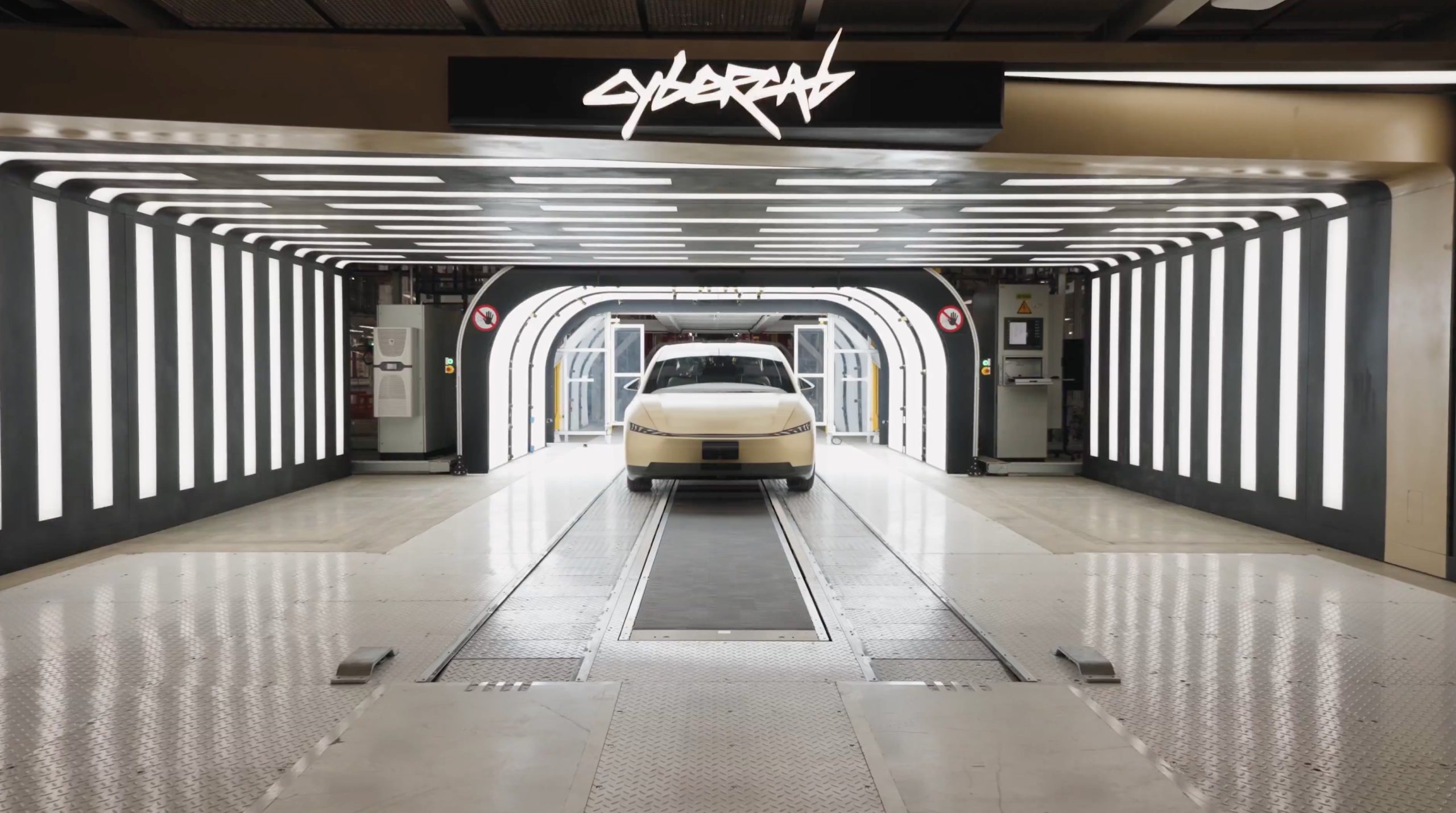
Tesla bear Michael Burry got blunt with his beliefs over the company’s valuation, which he called “ridiculously overvalued” in a newsletter to subscribers this past weekend.
“Tesla’s market capitalization is ridiculously overvalued today and has been for a good long time,” Burry, who was the inspiration for the movie The Big Short, and was portrayed by Christian Bale.
Burry went on to say, “As an aside, the Elon cult was all-in on electric cars until competition showed up, then all-in on autonomous driving until competition showed up, and now is all-in on robots — until competition shows up.”
Tesla bear Michael Burry ditches bet against $TSLA, says ‘media inflated’ the situation
For a long time, Burry has been skeptical of Tesla, its stock, and its CEO, Elon Musk, even placing a $530 million bet against shares several years ago. Eventually, Burry’s short position extended to other supporters of the company, including ARK Invest.
Tesla has long drawn skepticism from investors and more traditional analysts, who believe its valuation is overblown. However, the company is not traded as a traditional stock, something that other Wall Street firms have recognized.
While many believe the company has some serious pull as an automaker, an identity that helped it reach the valuation it has, Tesla has more than transformed into a robotics, AI, and self-driving play, pulling itself into the realm of some of the most recognizable stocks in tech.
Burry’s Scion Asset Management has put its money where its mouth is against Tesla stock on several occasions, but the firm has not yielded positive results, as shares have increased in value since 2020 by over 115 percent. The firm closed in May.
In 2020, it launched its short position, but by October 2021, it had ditched that position.
Tesla has had a tumultuous year on Wall Street, dipping significantly to around the $220 mark at one point. However, it rebounded significantly in September, climbing back up to the $400 region, as it currently trades at around $430.
It closed at $430.14 on Monday.
